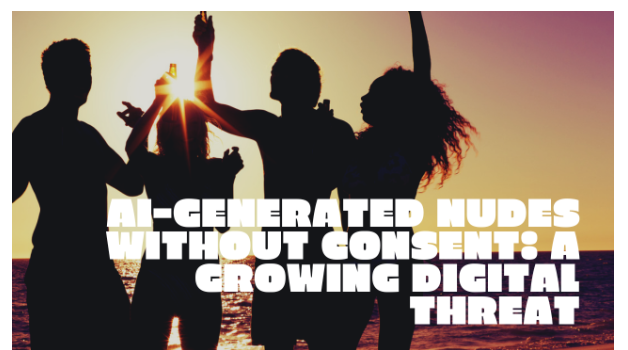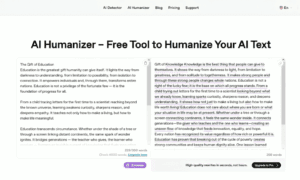As artificial intelligence continues to reshape how we interact with digital media, it’s also giving rise to a deeply troubling trend: AI-generated nudes without consent. Tools like Undress AI and its mobile counterpart, the Undress APP, have made it alarmingly easy to create fake nude images of real people—often without their knowledge or permission.
What was once a fringe internet gimmick has now evolved into a mainstream concern involving deepfakes, harassment, blackmail, and psychological trauma. This article explores how these tools work, the dangers they pose, and why regulation, ethical awareness, and responsible use are urgently needed.
What Are AI-Generated Nudes?
AI-generated nudes refer to digitally fabricated nude images created by artificial intelligence. These images are not real photographs but simulations made to look convincingly real, often using deep learning models trained on large image datasets.
Unlike traditional photo editing that requires manual effort and technical skill, tools like Undress AI automate the process, allowing users to upload a clothed image and receive a digitally “undressed” version within seconds.
The Undress APP makes the process even more accessible, enabling mobile users to generate these images from their phones with minimal technical know-how.
How Tools Like Undress AI Work
Undress AI operates by using machine learning and computer vision to analyze the visible parts of a person’s body and clothing. It then predicts and reconstructs the hidden anatomy beneath the clothing, creating a synthetic nude image.
This process is made incredibly user-friendly:
- Upload a photo to the Undress APP or web interface
- Click a button to process the image
- Download the AI-generated result
Some users upgrade to premium features using an undress ai promo code, which unlocks higher resolution outputs, faster processing, and more rendering credits.
While it may seem like a harmless novelty to some, these capabilities can be easily weaponized—especially when used without the subject’s consent.
The Ethical Crisis: Consent, Privacy, and Digital Violence
The use of AI-generated nude imagery without consent is more than an ethical gray area—it’s a form of digital sexual violence.
Ethical concerns include:
- Violation of privacy: Using someone’s image to create fake nude content is inherently invasive.
- Lack of control: The subject has no way to stop the manipulation once their image is uploaded.
- Psychological harm: Victims may suffer anxiety, depression, and reputational damage.
- Normalization of abuse: Treating this as entertainment dehumanizes the subject and desensitizes society to real abuse.
Even when AI-generated, the damage caused by these images can mirror that of revenge porn or non-consensual pornography.
Who’s at Risk?
While anyone can be a victim of AI-generated fake nudes, certain groups are particularly vulnerable:
- Women and girls, especially public-facing individuals or influencers
- Students, where peer harassment is common
- Celebrities, whose images are widely available
- Ex-partners, targeted for revenge or humiliation
Often, these images are shared in private chat groups, forums, or social media without the person’s knowledge. Once distributed, removal becomes nearly impossible.
The Role of Undress APP and the Need for Accountability
The Undress APP brings Undress AI’s capabilities directly to mobile devices. Its sleek interface and ease of use make it appealing to casual users—but also enable misuse at scale.
Key concerns include:
- No built-in consent checks
- Lack of age verification
- Cloud-based data storage without transparency
- Minimal content moderation or abuse reporting tools
The app’s monetization through upgrades and undress ai promo code campaigns may further incentivize growth over safety. Without ethical safeguards or accountability, these platforms risk becoming enablers of digital exploitation.
Legal Landscape: Is It Even Illegal?
In many jurisdictions, the legal system has not yet caught up with AI-driven content manipulation. While laws against revenge porn exist in many places, AI-generated content falls into a gray area.
Legal challenges include:
- Proving intent or harm when the images are “fake”
- Lack of specific laws addressing synthetic media
- Jurisdictional issues when apps operate internationally
That said, some regions are making progress. The UK, parts of the EU, and several U.S. states are introducing or expanding laws to criminalize non-consensual deepfake nudes, including AI-generated content.
However, enforcement remains difficult, and most victims are left with limited recourse.
What Can Be Done: Steps Toward Ethical AI Use
Addressing this growing threat requires coordinated action from multiple fronts—technology providers, lawmakers, platforms, and users.
For Developers and Platforms:
- Implement consent verification mechanisms
- Add watermarks to all AI-generated images
- Provide opt-out systems for people to block use of their likeness
- Enforce strict age restrictions and content moderation
For Users:
- Never use these tools to create images of others without their consent
- Use only AI-generated avatars or your own image
- Be wary of sharing or saving sensitive content to cloud storage
- Use undress ai promo code responsibly for ethical experimentation, not exploitation
For Lawmakers:
- Pass explicit laws banning non-consensual AI nude generation
- Improve cross-border cooperation on digital harassment
- Offer educational programs to raise awareness in schools and workplaces
Final Thoughts: The Responsibility Lies With All of Us
Tools like Undress AI and the Undress APP show how far artificial intelligence has come—but they also reveal how easily powerful technology can be misused. The ability to create AI-generated nudes without consent presents a growing danger to privacy, safety, and human dignity.
While it may start with curiosity or novelty, the consequences are anything but harmless. As users, developers, and citizens, we all have a role to play in shaping how this technology is used—and whether it’s used for progress or harm.
Innovation should never come at the cost of consent.
Read More From Techbullion































